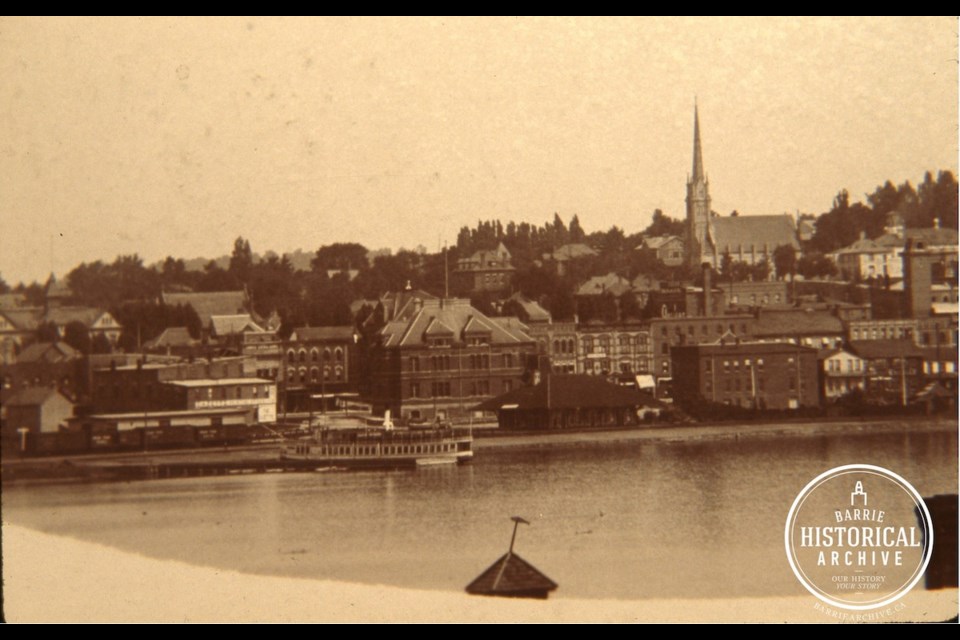Editor's note: Read part one of this series here.
Gang member Albert McLean had been a saloon keeper in Sault Ste. Marie for a time but had lately returned to what he knew best – lawlessness. He had once been sentenced to 35 years in an American prison for the murder of a deputy sheriff who had been attempting to arrest him. After 10 years, he was somehow pardoned and freed.
Charles Clark, described as a well-known American burglar and crook, had spent most of his life in and out of prisons. The tool kit that he had tossed into Kempenfelt Bay was soon fished out and added to the pile of evidence against him. A bottle of gun powder was found under Carley’s boat house and later connected to Clark’s safe drilling and blowing activities.
John Maloney, the third gang member, and Charles Clark were brought before a judge and swiftly convicted of the earlier Kempenfelt Hill burglary as the evidence in that case was overwhelming. They remained in the Barrie Jail to await their sentence and to be tried for some of their other crimes in the county. McLean, meanwhile, was housed in a Toronto lock up until trial day.
Several days after their arrest, Maloney and Clark attempted a jailbreak. Clark had threatened to burn down the whole town if not released, for he was an innocent man. For that, he and his partner were kept in the north-east corridor of the jail, a space reserved for the hardest of cases. The pair apparently set to work immediately on their plan to gain freedom.
At 8 p.m. that Saturday evening, Jailor Sissons and Turnkey Caldwell approached the corridor area in order to lock Maloney and Clark in their cells for the night. With them, they brought another prisoner who was instructed to lock the corridor door as soon as Sissons and Caldwell entered.
The instant the door opened, it was jerked wider by John Maloney who immediately struck Sissons on the head with a stick which later turned out to be the leg of a dismantled stool. Clark struck Caldwell. The prisoner in charge of the door did as he was asked and closed the door behind the jailors as they pushed the convicts farther down the corridor.
Caldwell fairly quickly got Clark into his cell by showing him his gun. Maloney and Sissons continued to tussle with Sissons raining down blows to Maloney’s head with his heavy ring of keys. The tide turned in Maloney’s favour when he began to choke his opponent but Caldwell put an end to the melee when he put a bullet into Maloney’s leg.
A crew of doctors arrived and spent an hour trying to dig the bullet from Maloney’s leg but it was never found. During this time, Clark paced up and down in his cell like a wild animal and screamed that he was an innocent man but would gladly shoot anyone standing in the way of his freedom if he could just get his hands on a revolver.
When Monday arrived, Constable Beardsley travelled to Toronto to pick up Albert McLean so that the trio of gangsters could be tried together for their multitude of burglary related charges. The Toronto jail was mightily embarrassed when McLean was not found in his cell. He had found a piece of scrap iron and used it to pry open not one but two doors before walking completely undetected into thin air.
The next day, two thirds of the notorious gang had their day in court. Charles Clark insisted on representing himself and proved to be a capable defense attorney on his own behalf, although this strategy ultimately backfired as reported by the Northern Advance of July 22, 1897.
“He conducted his own case and at times his cross examination was skillful. He gave evidence of being a clever fellow, intended for some nobler work than burglary. There is no doubt he put his foot in it, however, for his conduct through the day convinced the magistrate that he is a clever man and a dangerous person to have at large so his sentence was three years longer than Maloney’s.”
A revolver that Charles Clark had been reaching for at the time of his arrest was eventually discovered tucked behind a door near the place where he was held when first brought into the jail. He had been left alone for a few minutes before being searched. It was fully loaded.
Each week, the Barrie Historical Archive provides BarrieToday readers with a glimpse of the city’s past. This unique column features photos and stories from years gone by and is sure to appeal to the historian in each of us.

